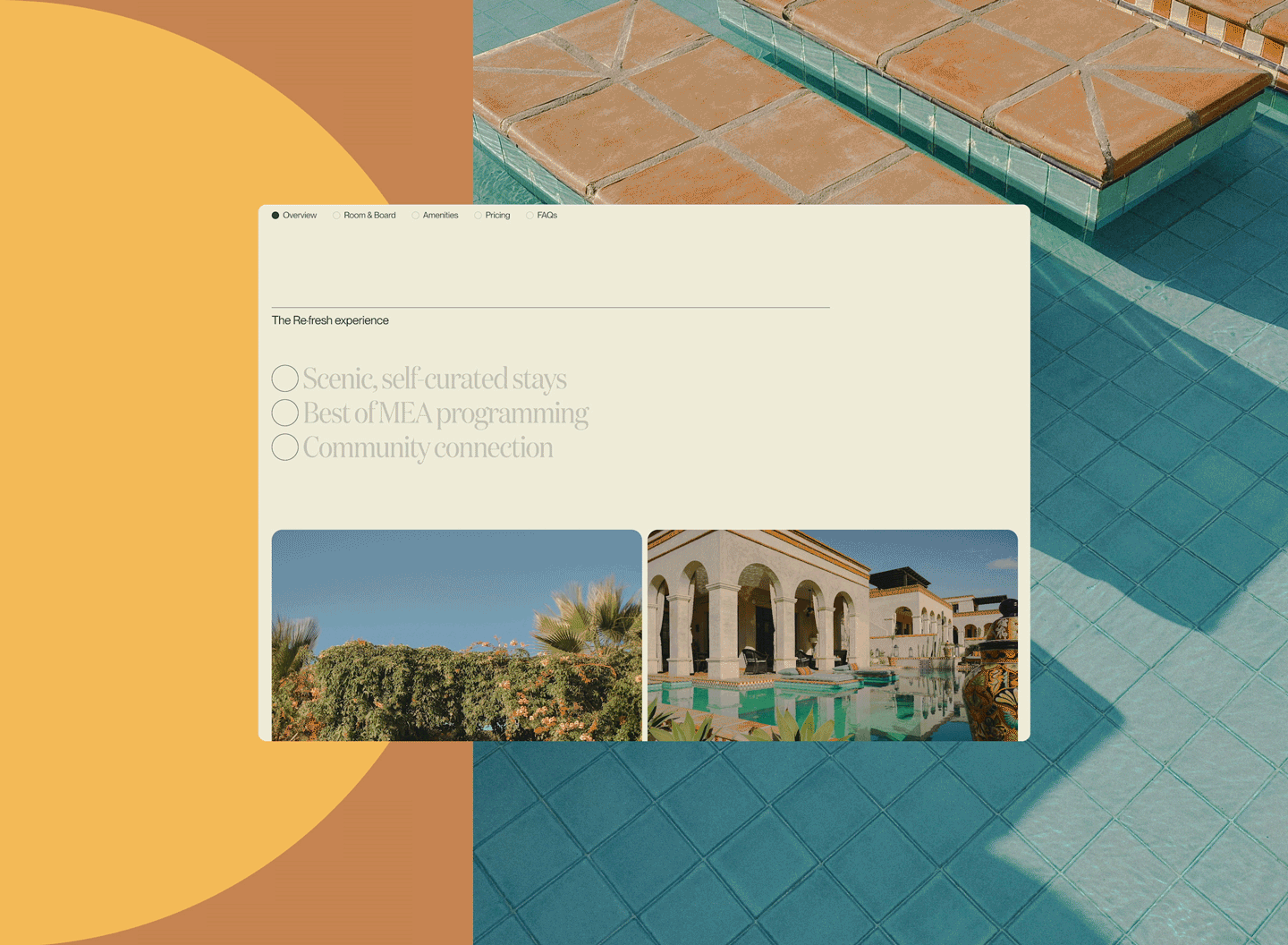Meeting the moment
GoNoodle’s educationally-rich, movement-based product is used in approximately 90% of elementary schools. They wanted to take advantage of this reach to prevent, recognize, and treat mental health challenges in children, which had already been increasing over recent years when Covid-19, a once-in-a-generation catalyst, hit. Teachers were the first responders.
In our early research to understand the problem space, we heard from teachers about what their students were facing and feeling.
Mrs. Vidaña: “The first year, after Covid-19 hit, it was really bad. I think it was just the anxiety of their parents putting on the news and listening to how many people passed away. A lot of them had never heard of the word ‘dead’ before.”
Ms. McKinin: “Overall, my students are very angry. There’s a lot of just anger in them. We just don’t know how to talk about things going on in our life.”
Immersing ourselves
We hit the road to visit classrooms, teachers, and schools that used GoNoodle. We observed, asked questions, interviewed teachers on picnic benches while they supervised recess, and wrangled classrooms of kids. We visited well-funded schools where each kid had a personal tablet, and schools with high rates of parent-incarceration and free breakfast programs. We watched native English speakers, ESL students, and deaf students use GoNoodle (even speaking some ASL and Spanish ourselves). We danced, sang along, and smiled a lot.
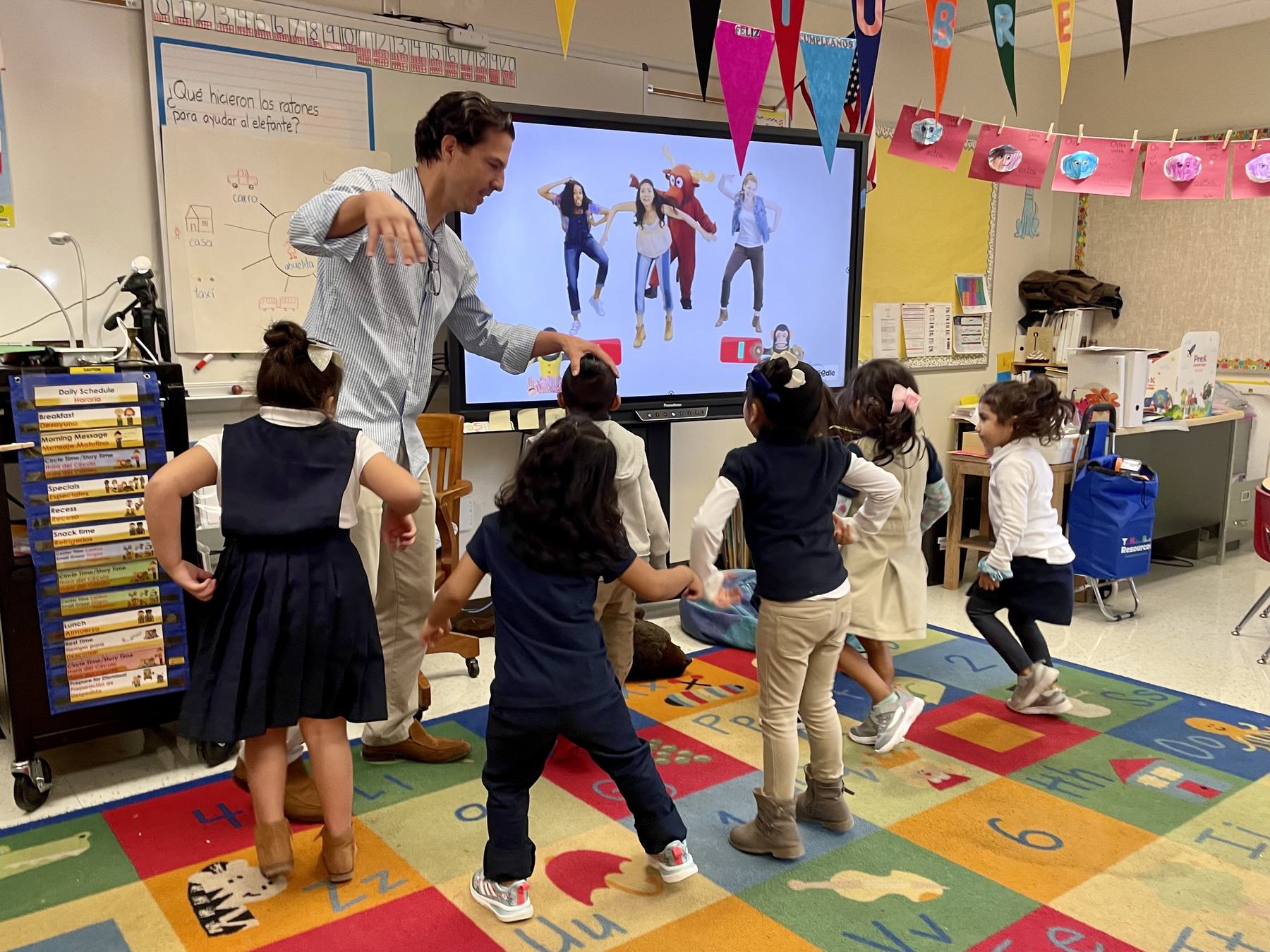
There was palpable positive energy and excitement for GoNoodle everywhere we went. We heard again and again that it was the perfect tool for “getting the wiggles out,” and “Brain Breaks.”
In tandem, we heard about SEL (Social Emotional Learning). The idea that SEL should be taught in schools alongside the “hard” subjects like spelling, math, and science is becoming more and more mainstream. Research shows that SEL drives better academic outcomes, but teachers and administrators don’t know how to incorporate it into their classrooms.
We left with a clear problem statement: How do we level up GoNoodle to meet these emerging needs from teachers and kids?
Our vision: A new frontier for hearts and minds
- “Happier, Healthier Kids” is GoNoodle’s North Star. This sounds simple, but the North Star was a powerful tool for alignment as well as for positioning the existing product (for physical health outcomes) and the new product (for mental health outcomes) as distinct, yet complementary.
- Do no harm to the existing product. Keep the focus around movement and videos—a direction that’s already beloved and successful.
- Build a whole new experience for social-emotional growth. Make it a game, and sneak in the learning.
This distinct new SEL-focused product became known as SuperNoodle. As part of our Vision stage, we spent weeks designing, critiquing, and prototyping it as a world of worlds. Each world centers on a GoNoodle champ and a feeling, situation, or skill, such as:
- How to calm down
- Managing anxiety
- Responding to bullies
- Getting ready for test day

Each world is made of levels to get kids practicing, reflecting, conversing, and learning:
- Guided meditations
- Class discussion prompts
- GoNoodle videos
- Multiple-choice questions
Between levels, players reach checkpoints to gauge their emotional wellbeing.
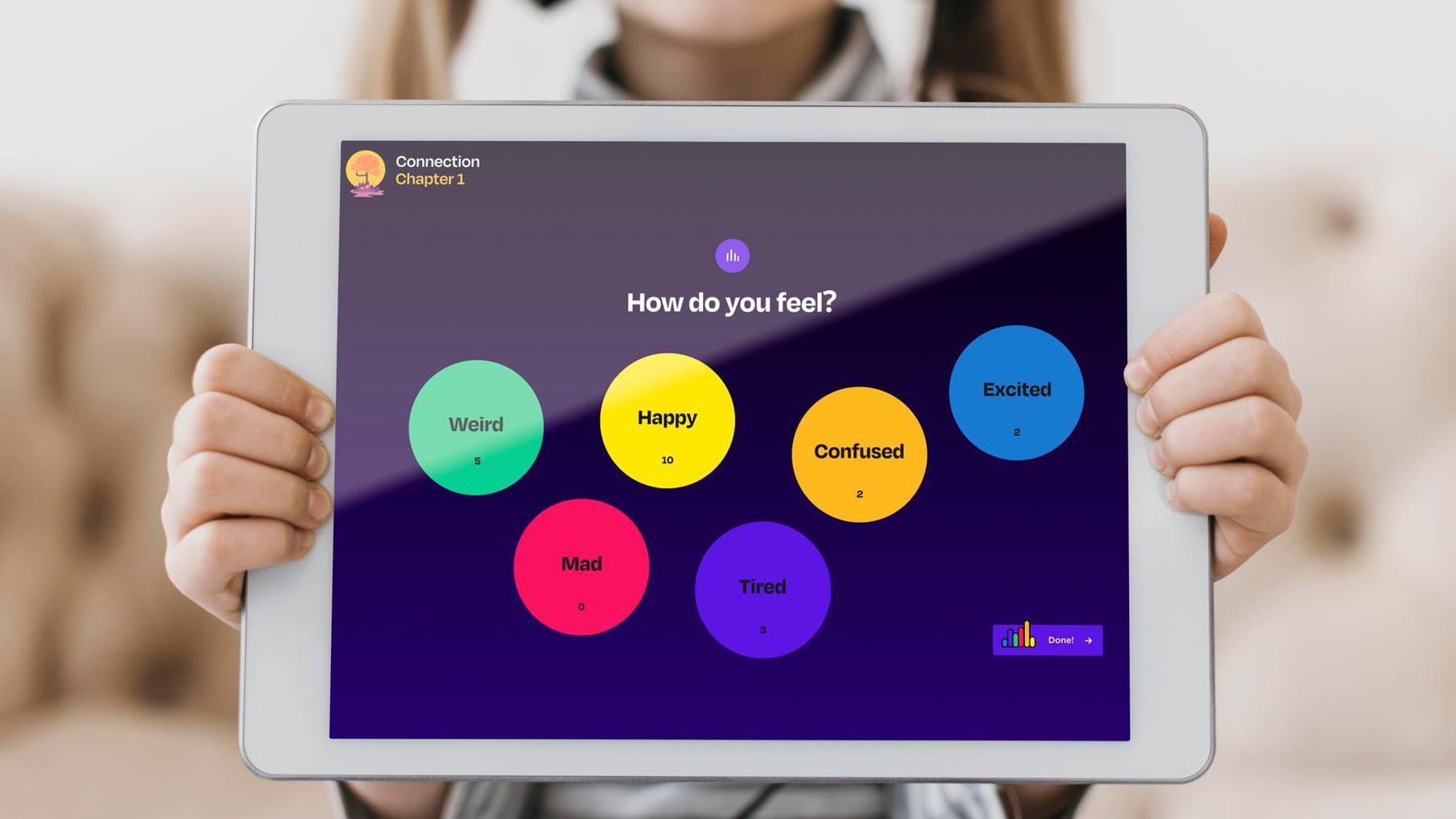

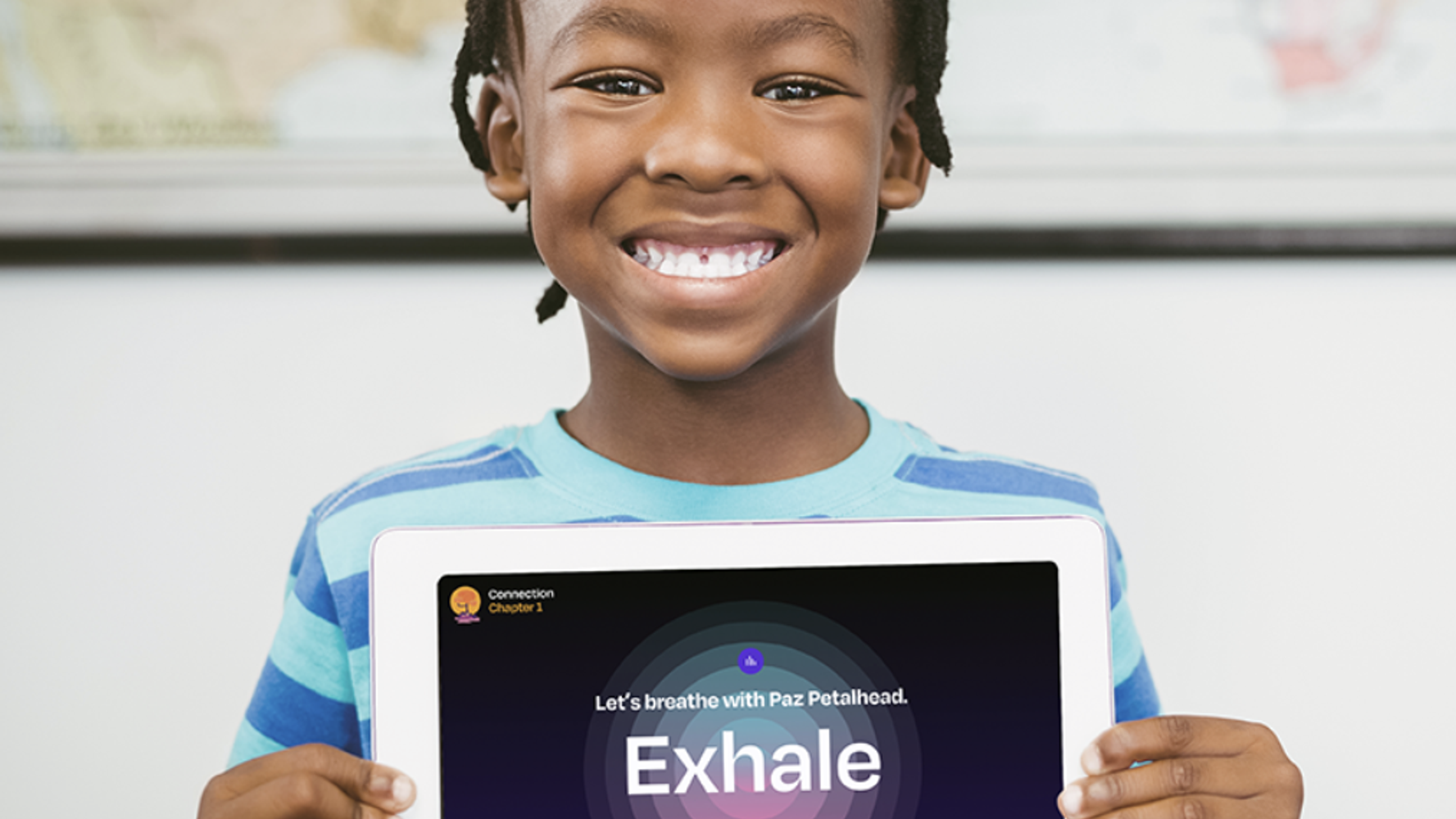
Across the board, we evolved the design system. We retained the GoNoodle feel, but introduced more playfulness and warmth to reflect the platform’s shift toward more personal growth.

Validating
Midway through our Vision stage, we strung together a prototype to test both the intuitiveness of the UI and the concept overall, asking users: “How would you describe what you’ve just seen compared to the GoNoodle you know today?”
They responded:
“It feels like you care about the kids. You think it’s important that they feel good in the classroom and for the teachers to know what’s in the kids’ minds.”
“I think GoNoodle is really trying to think of the whole student as a whole being, not just academic… thinking about the whole person and not just one part of it.”
Building (and funding) a business
We were designing a product that could do a lot of good, but we weren’t naive to the fact that launching and maintaining it would take time, resources, and money. GoNoodle wanted an ethical way to fund this work—a system that didn’t cost teachers and families or use ads that would compromise integrity.
By returning to the North Star—happier, healthier kids—we were able to identify a solution: partnering with organizations that shared the same mission. We developed a hyper-local, sponsor-based plan. GoNoodle would seek out sponsors who are invested in the well-being of kids in their area (a children’s hospital, a government organization, a local insurance provider) and offer them the chance to sponsor SuperNoodle access for their locale of interest. This would leverage partnerships GoNoodle already had, and was mission-aligned for all parties.
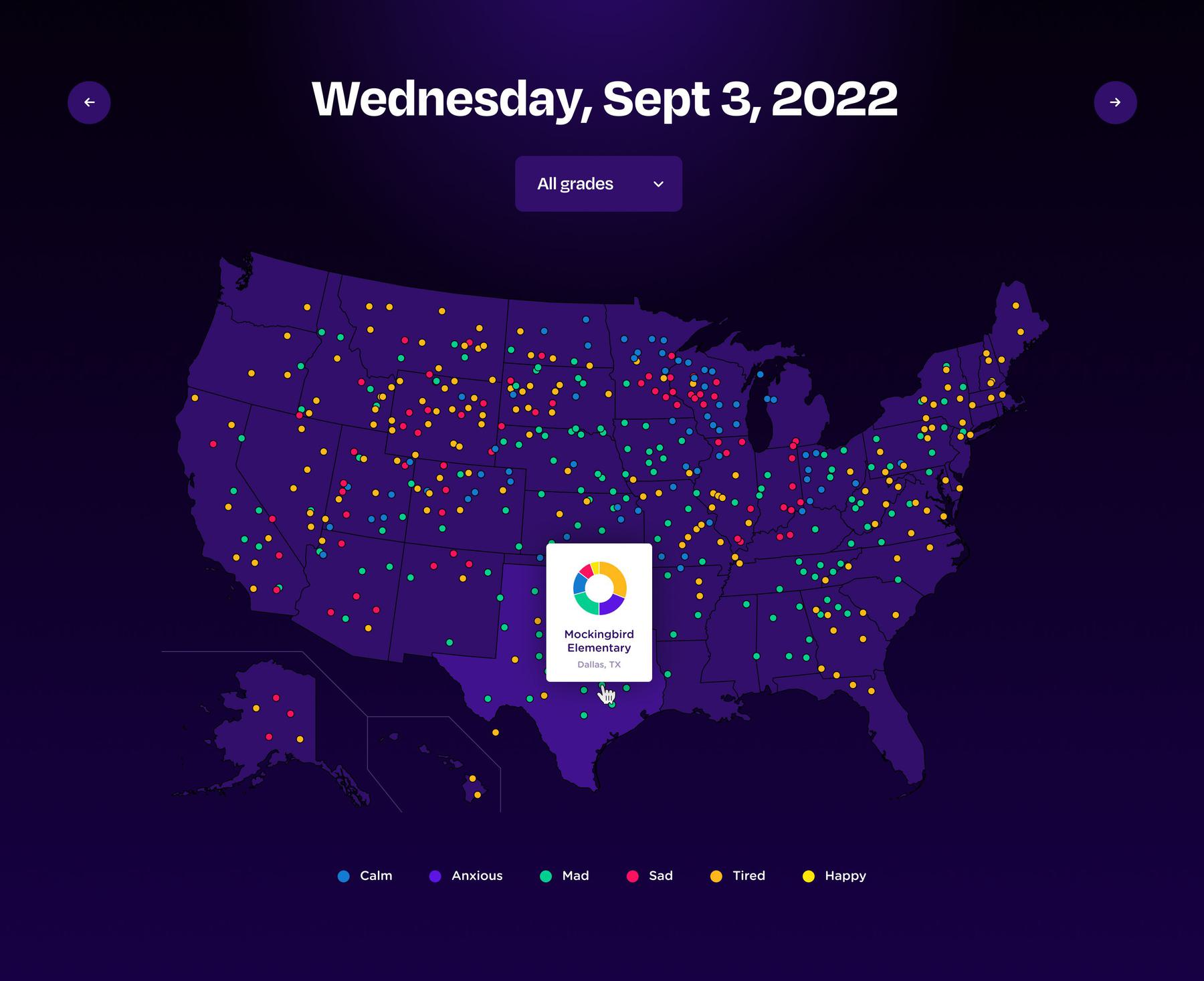
Together, GoNoodle and Upstatement created a pitch for SuperNoodle funding based on this plan. We were able to build upon an artifact from our Vision phase—the Vision Share, which is strategy in action. It tells the story of our client’s product and plots a course using product, design, and technical recommendations backed by the research and analysis of the Vision phase. It’s meant to align stakeholders and get them excited about what’s to come.
The pitch worked. With investors at our back, GoNoodle brought us back to build the MLP (Minimum Loveable Product) of SuperNoodle. We collaborated with researchers and educational experts to finalize the curricular details of each activity until the SuperNoodle we’d envisioned came to life.
When SuperNoodle was announced, GoNoodle was inundated with requests for sales calls, to the point that they had to turn attendees away from their webinar when over 2,000 people showed up. The MLP will be used in classrooms starting in the fall of 2023—we can’t wait to see it in action, and are proud to be a part of the lives of students and teachers.





